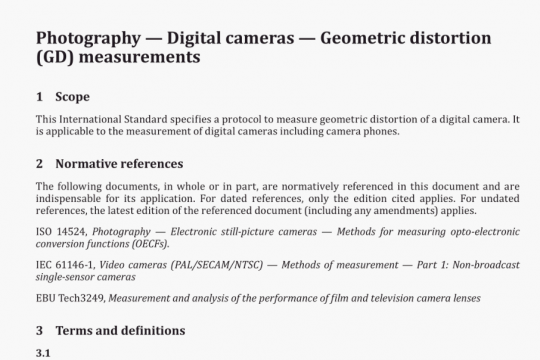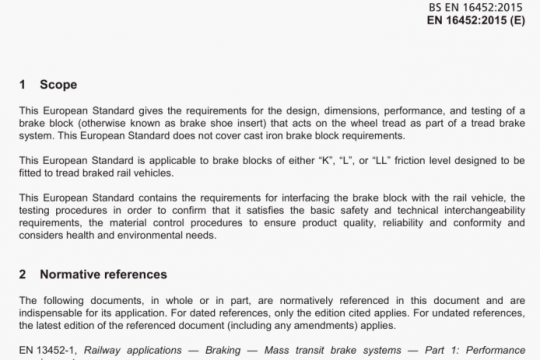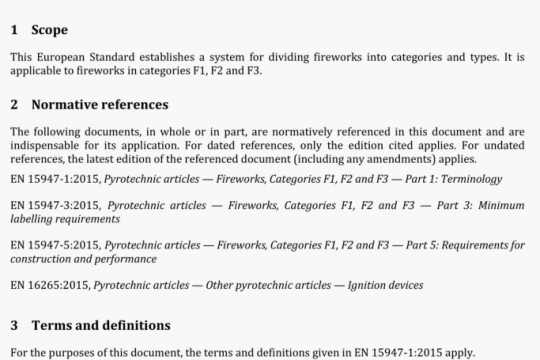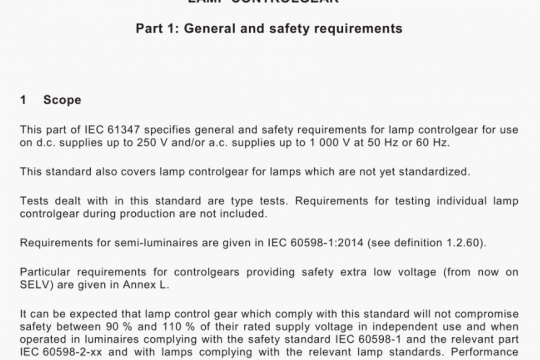BS EN 62321-3-2:2014 pdf free download
BS EN 62321-3-2:2014 pdf free download.Determination of certain substances in electrotechnical products Part 3-2: Screening – Total bromine in polymers and electronics by Combustion – lon Chromatography.
The concept of ‘screening’ has been developed to reduce the amount of testing. Executed as a predecessor to any other test analysis, the main objective of screening is to quickly determine whether the screened part or section of a product:
— contains a certain substance at a concentration significantly higher than its value or values chosen as criterion, and therefore may be deemed unacceptable;
— contains a certain substance at a concentration significantly lower than its value or values chosen as criterion, and therefore may be deemed acceptable;
contains a certain substance at a concentration so close to the value or values chosen as criterion that when all possible errors of measurement and safety factors are considered, no conclusive decision can be made about the acceptable absence or presence of a certain substance and, therefore, a follow-up action may be required, including further analysis using
verification testing procedures.
This test method is designed specifically to screen for bromine (Br) in polymers and electronics in electrotechnical products. C-IC provides information on the total quantity of bromine present in the sample, but does not identify compounds or valence states of the bromine. Therefore, special attention shall be paid when screening for bromine, where the result will reflect only the total bromine present. The presence of brominated flame retardants PBB or PBDE shall be confirmed by a verification test procedure. When applying this method to electronics as received”, which, by the nature of their design, are not uniform, care shall be taken in interpreting the results.
4.2 Principle of test
A sample of known weight or volume is placed into a sample boat and introduced at a controlled rate into a high-temperature combustion tube. There the sample is combusted in an oxygen-rich pyrohydrolytic environment. The gaseous by-products of the combusted sample are trapped in an absorption medium where the hydrogen bromide (HBr) formed during the combustion disassociates into its respective ion, Br. An aliquot of known volume of the absorbing solution is then manually or automatically injected into an ion chromatograph (IC) by means of a sample injection valve. The halide anions, including bromide, are separated into individual elution bands on the separation column of the IC. The conductivity of the eluent is reduced with an anion suppression device prior to the ion chromatograph’s conductivity detector, where the anions of interest are measured. Quantification of the bromine in the original combusted sample is achieved by calibrating the system with a series of standards containing known amounts of bromide and then analysing unknown samples under the same conditions as the standards. The combined system of pyrohydrolytic combustion followed by ion chromatographic detection is referred to as combustion-ion chromatography (C-IC).
5 Reagents and materials
WARNING — All recognized health and safety precautions shall be in effect when carrying out the operations specified in this International Standard. Failure to heed the directions contained in this International Standard, or those of the manufacturer of the devices used, may result in injury or equipment damage.
Use only reagents of recognized analytical grade. Weigh the reagents with an accuracy of ± 1 % of the nominal mass, unless stated otherwise. The reagents listed in 5 b) and 5 g) to 5 k) may be considered representative examples for the preparation of eluents (5 i)).
a) Water, complying with grade 1 as defined in ISO 3696.
b) Hydrogen peroxide, a mass fraction of 30 %, (H202).
Hydrogen peroxide is very caustic, thus the operator shall wear goggles and gloves and shall work under a fume hood when handling this reagent. As this method uses a gas (oxygen) at a high temperature and under high pressure, precautions shall be taken by the operator.
C) Quartz wool, fine grade or other suitable medium.BS EN 62321-3-2 pdf free download.




